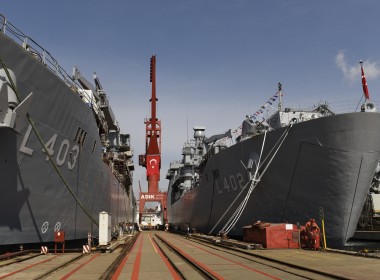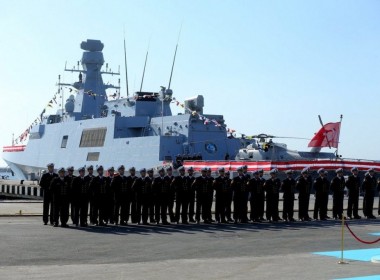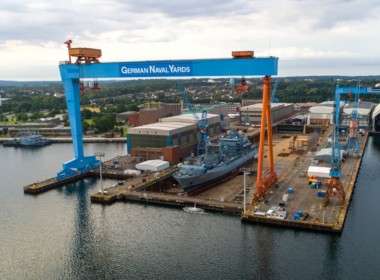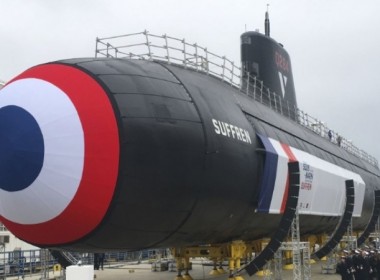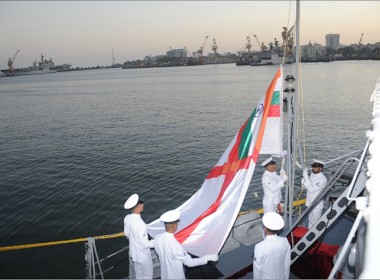COLUMN | The Turkish Navy – an increasingly potent player in a turbulent region [Naval Gazing]

The Turkish Navy (TN) has long faced numerous operational challenges, including complex territorial disputes with Greece, a demanding commitment to NATO, and large scale trafficking of people and illegal narcotics through sea areas adjacent to Turkey.
On the political front, the TN is charged with maintaining a viable presence in what Ankara dubs Turkey’s “blue homeland”, namely large areas of the Aegean, Black and Mediterranean seas.
A new commitment is the backing up of Ankara’s interests in the multi-faceted rivalry for offshore energy exploitation involving Turkey, Libya, Cyprus and Israel.
Turkey recently underscored its position by initiating a strategic pact with the UN-recognised administration of Fayez al-Ferraj in western Libya which includes the creation of a Libya-Turkey sea corridor, intended to restrain the operation of the joint Cyprus-Greece-Israel pipeline, which has been constructed to take gas from offshore fields into western Europe.
The region is currently highly volatile, and with reports of Turkish-sponsored mercenaries bring flown into Libya to support al-Ferraj, and of Russian private military contractors joining General Khalifa Haftar‘s rebel army, the stage seems set for a showdown in that country.
Major conflict in Libya is virtually certain to have a naval aspect, and the TN has, in a contingency move, deployed two Gabya-class frigates, Goksu and Gokova, to North African waters. Russia, for its part, recently boosted its Mediterranean presence with at least one additional frigate, while the Egyptian Navy put down a strategic marker in late 2019 by, unusually, holding a large and high-profile amphibious warfare exercise in the Mediterranean.
Spearheading the TN order of battle is a flotilla of 12 German-built Type 209 diesel electric submarines, commissioned from 2016 onwards. They are armed with 553mm torpedoes and Harpoon anti-shipping cruise missiles. These boats are to be replaced by Turkish-built Type 214 subs, with air-independent propulsion systems. Four have so far been ordered, the first of which, Piri Reis, was launched in 2019.
Most potent TN surface units are eight highly modernised ex-US Navy Oliver Hazard Perry frigates of the Gabya class. The armament of these 4,000-tonne, gas turbine- powered ships includes Standard and Evolved Sea Sparrow air defence missiles, Harpoon anti-shipping cruise missiles (ASCM), anti-submarine torpedoes and an AB-212 or S-70B helicopter.
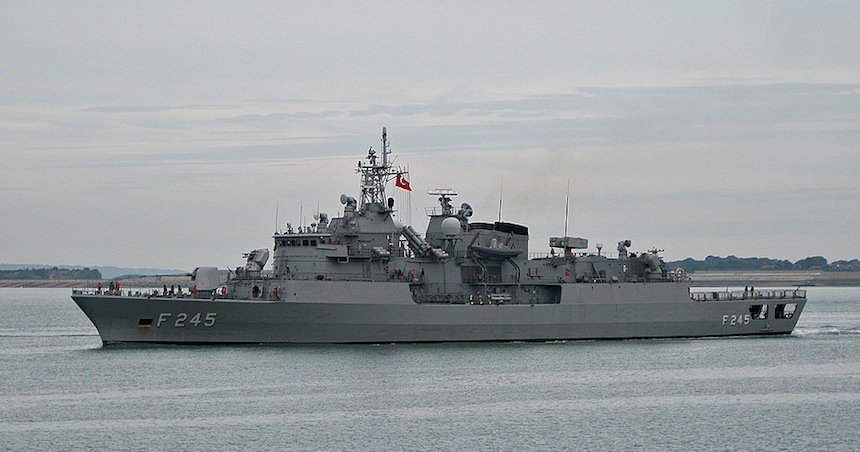
Four German-designed MEKO 2000 Track III frigates of the Barbaros class were commissioned from 1997, two being built in Germany, and the other pair in Turkey. These gas turbine/diesel powered warships feature Standard, Evolved Sea Sparrow and Harpoon missiles, as well as a 127mm gun, a Sea Zenith close-in weapon system, and can operate an AB-212 or S-70 helicopter.
Also in service, dating from the early 1980s, are four Yavuz-class frigates of an earlier MEKO 2000 design.
Corvettes are represented in the TN fleet by four of the modern, indigenously-built, Ada class, and six former French Navy D’Estienne d’Orves vessels.
The 2,400-tonne Ada corvettes have an armament fit which includes the indigenous Atmaca surface-to-surface missile, and a 76mm gun. An improved version of the Ada class, to be known as the Istanbul class, is under development.
A major advance in TN capabilities is on the horizon, in the form of the 27,000-tonne landing helicopter dock (LHD) Anadolu.
Currently under construction in Istanbul by the Spanish/Turkish Selef-Navantia consortium, based on the Royal Spanish Navy’s Juan Carlos 1, the diesel-electric powered, 21-knot, LHD was designed to operate the F-35B vertical short take-off and landing fighter-bomber as well as a range of helicopters.
Turkey, however, was recently ejected, for political reasons from the multi-national F-35 Joint Strike Fighter project, and it is unclear whether or not Turkey will ever be able to acquire the F-35B.
Weapons control, and sensor, systems will be of mainly indigenous manufacture. Armament will include the Rolling Airframe Missile, and the Phalanx close-in air defence system.
Anadolu incurred significant damage in a fire in 2019, but Ankara says the LHD will nevertheless be completed by the end of 2020. Anadolu will operate in company with the landing ships of the Osmat Gazi and Bayraktar classes.
Backing up the larger units of the Turkish fleet are some 35 missile-, and gun-armed patrol craft, 11 mine countermeasures vessels, and many landing craft of various sizes. Auxiliary vessels include two 19,350-tonne Akar-class replenishment tankers, and the new electronic intelligence gathering ship Ufuk.
Already a significant maritime force, the TN looks set to be a major player in an increasingly turbulent region in the years ahead.


